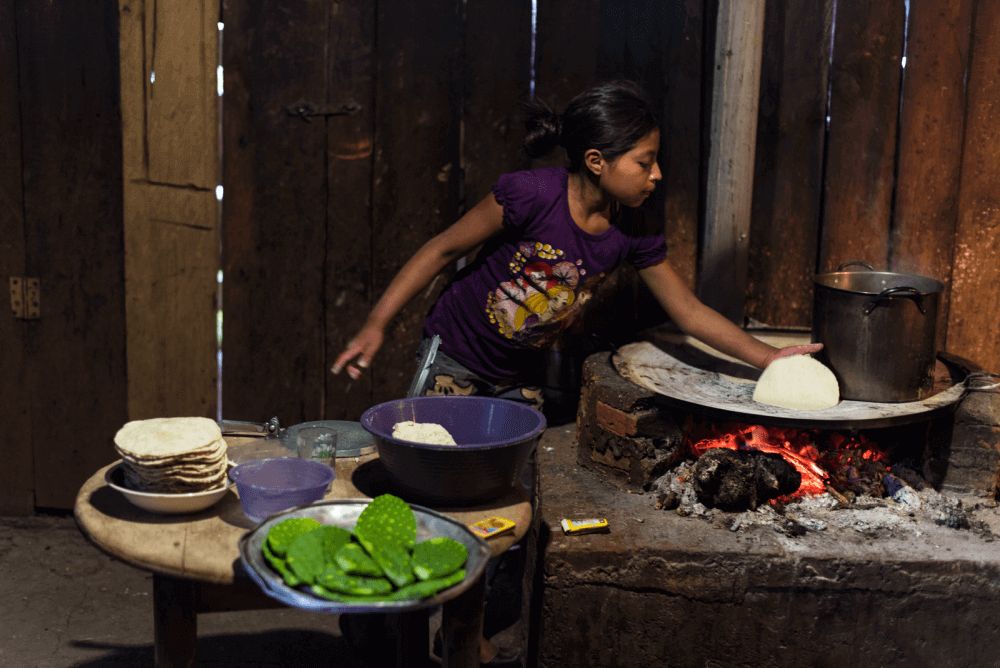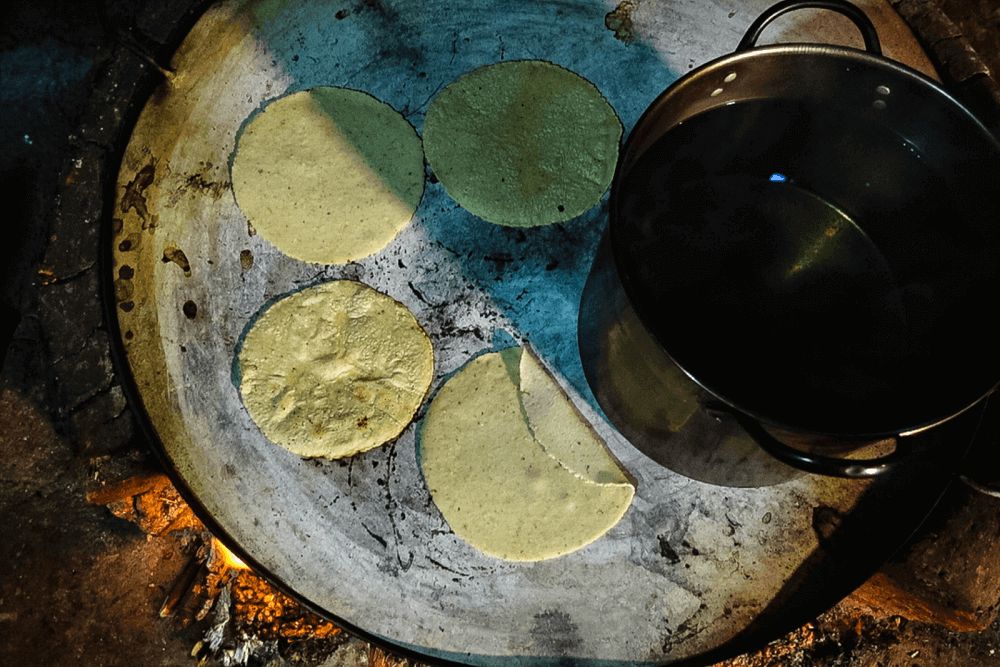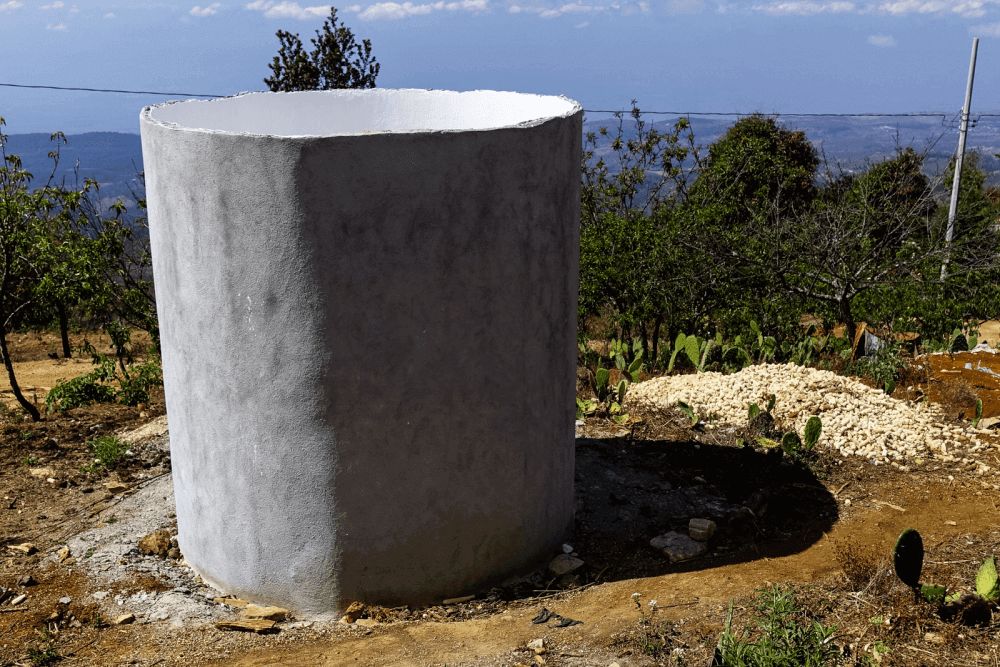Text by Constanza Monterrubio Solís
Photos by Inanc Tekguc

Nopales, or prickly pear leaves, have been recently incorporated into local diets, providing various kinds of benefits. Photo: Inanc Tekguc, 2017
Preparing and sharing food is one of the many nourishing activities that rural women carry out day by day. The diversity of grains used, cultivation methods, processing techniques, and preparation preferences are elements that tell us powerful stories about local biocultural traditions. The social and geographical contexts of food are a reflection not only of local systems, where women are important decision-makers, but also of a broader picture of regional and global processes. Rural women everywhere are shaping and adapting their practices in a constant dialogue with these larger dynamics, with the result that many traditional foodways are in a state of transition.
Rural women everywhere are shaping and adapting their practices, with the result that many traditional foodways are in a state of transition.
Chiapas, in southern Mexico, is no exception. It is not easy to capture the lush biocultural diversity of places such as Chiapas. Each corner of this region displays an exuberant variety of shapes, colors, aromas, and flavors that capture every sense and give evidence of the close relationship between the local cultures and the territory.
In honor of that humbling diversity, this article can only refer to the transitions of a food landscape that is generally representative of Chiapas’ Highlands. The story of Gaby in San José, municipality of San Cristobal de las Casas, is only a small sample showing the ongoing transitions in the Highlands of Chiapas, with a growing city and the consequent pressures related to the land and access to natural goods such as firewood and drinking water. It illustrates how women draw from their biocultural memory to keep their relationship with food, especially with corn, alive and thriving.
Daily Life for Women in San José
In San José, days normally start at five or six in the morning, when women light the fire and rinse the corn that was left soaking with charcoal on the stove the previous night. This process is called nixtamalization, and it allows the nutrients of the corn to become more readily available for the human body. After rinsing the corn four times, women grind it in their own mills or in one of a relative or neighbor. Once the dough is ready, women start making tortillas for breakfast.

Tortilla making requires nixtamalization of the corn in order for its nutrients to become available for the body. Photo: Inanc Tekguc, 2017
Women are in charge of housework year-round, but during the dry season, they are also responsible for getting firewood and water for the household. For women like Gaby, these added chores have become even more of a burden since they now are also pursuing a source of cash income through the sale of corn products, which are part of their biocultural tradition. Pozol, tortillas, tostadas, memelas, tamalitos, pinol, and atole are only some of the products that women from San José sell in the markets and streets of the city of San Cristobal de las Casas. These products, as a result of the traditional milpa crop-growing system, have an extremely high cultural importance for Mexicans, and for women represent an economic alternative that is culturally rooted.
Women are in charge of housework year-round, but during the dry season they are also responsible for getting firewood and water for the household.

The dry season increases the amount of work women have to do in order to have enough water to cover their needs. They must line up early in the morning to fill bottles. Photo: Inanc Tekguc, 2017
To be able to sell this diversity of products, Gaby and other women of San José face many challenges. The first is that the small size of the agricultural plots available to them and the relatively poor natural state of the soils make the production of corn insufficient to cover their household needs, let alone producing the amount the corn needed to process and sell. The second challenge is the depletion of the soils after years of dependency on fertilizers and herbicides. As a consequence, the milpa—which includes corn, beans, squash, and chilis—has been losing the diversity of wild edibles known as quelites, which are an important source of nutrients and are negatively affected by herbicides.

Although the sale of corn products brings economic benefits, it also means higher demand for firewood and increased pressure on the forests. Photo: Inanc Tekguc, 2017
The third challenge is the depletion of the region’s forests and sources of water. The nixtamalization required to prepare the corn products demands large amounts of firewood for cooking, as well as water to rinse the corn. This adds to the workload of women, especially from January until May, when water is only available from the community’s faucet and women have to carry heavy containers to gather enough water for their needs. A fourth challenge is the current health crisis in the region, due to the changes in diet. Mexicans in general, and especially Indigenous Peoples in the Chiapas Highlands, are suffering from an epidemic of Type II diabetes, which is linked to the consumption of Coca-Cola and other sugary drinks.
Indigenous Peoples in the Chiapas Highlands are suffering from an epidemic of Type II diabetes, which is linked to the consumption of Coca-Cola and other sugary drinks.
In response to these challenges, Gaby and twenty other women from San José have become part of the Mujeres y Maíz (“Women and Corn”) collective. The aim of the collective is to dignify women’s space in the household while improving their work conditions. Together, the members generate income-producing activities while at the same time reinforcing the biocultural traditions of the community and region. Even though Gaby realizes the importance of processing her own corn, she purchases the corn she uses for sale because she prefers to raise the corn her family will consume without chemical fertilizers. The fact that Gaby is now bringing income to her home allows her a voice in deciding whether her husband applies agrochemicals to the milpa or not. This is a turning point in an Indigenous household.
Now that Gaby is bringing income to her home, she has a voice in deciding whether her husband applies chemicals to the milpa or not. This is a turning point in an Indigenous household.
As part of Mujeres y Maíz, women have access to improved stoves as well as facilities to save rainwater. Nowadays, all of them have wood-saving stoves and save water to fulfill their needs during the dry season. These changes mean that women spend less time carrying water and collecting firewood. However, more complicated work will be required to recover the forest and stop soil erosion.

This water tank has enough capacity to meet household needs during the dry season, reducing the workload of women. Photo: Inanc Tekguc, 2017
In the last couple of decades, Gaby and many others have grown an edible species of cactus (from the genus Opuntia) that is not part of the “original” flora of the region. The incorporation of this plant into the local food system provides not only cover to the degraded soil, but also produces nopales, a vegetable known for its properties in controlling blood-sugar levels, which could be helpful to prevent and control diabetes.
Gaby and the other women of San José continue to teach their children how to process and consume corn products. Younger generations in the region also have their own challenges; however, watching their mothers assume a more dignified and respected position within the household and the larger community, while keeping biocultural traditions alive despite all odds, is certainly shaping the way they feel about their food and the overall food system.

From a very early age, women in San José learn to prepare corn products, keeping biocultural memory thriving. Photo: Inanc Tekguc, 2017
Thus, the factors determining women’s choices to feed their families go beyond volume and flavor. How food is cultivated, the strength it provides, and how it is prepared relates to biocultural traditions, which remain a powerful motivator in determining household food consumption despite the increasing homogenization of diets. In San José, women are engaged in transforming domestic space and continue to be powerful actors shaping local foodways in rural Mexico. Finally, integrating the perspective of biocultural tradition into food landscapes in transition sheds new light on ways to support local food systems around the world.
.
Back to Vol. 7, Issue 2 | Read the Table of Contents | Like Our Stories? Please Donate!
Acknowledgments: I wish to thank the women from San José for opening their homes and allowing me to share this story with a wider public. This piece was made possible thanks to the collective Mujeres y Maíz, especially Lucy and Francis, as well as by the funding received from the Programa de Becas Posdoctorales de la UNAM/CIMSUR. I also deeply thank Inanc Tekguc for sharing the photographic material for this story, and Susannah McCandless and David Harmon for their useful comments.
.
Constanza Monterrubio Solís works to bring joy back to the table. A postdoctoral fellow at the Catholic University of Chile, her research has focused on collective processes for biodiversity conservation in southern Mexico. Currently, she explores the resilience of local food systems in the Chilean Araucanía.
Further Reading
Basurto Santos, D., Lorenzana-Jiménez, M., & Magos Guerrero, G. (2006). Utilidad del nopal para el control de la glucosa en la diabetes mellitus tipo 2. Retrieved from http://www.revistas.unam.mx/index.php/rfm/article/view/12945
Bresani , R., Turcios, J. C., & de Ruiz, A. (2002). Nixtamalization effects on the contents of phytic acid, calcium, iron and zinc in the whole grain, endosperm and germ of maize. Food Science and Technology International, 8(2), 81–86. https://doi.org/10.1106/108201302024574
Lea, C. M. (2018). Adventures in Slimlandia: Neoliberalism and resistance in Mexico [Web log]. Retrieved from https://wp.nyu.edu/steinhardt-gfcmexico2018/
Osorio Hernández, G., & Carmona de Alva, C. (Eds.). (2018). Mujeres rurales en México: Estrategias para el sostenimiento de sus medios de vida. Retrieved from https://buff.ly/2A2lAgD




